


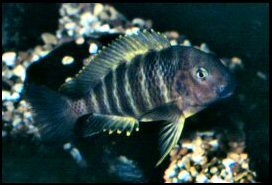
![]() .Tropheus
brichardi Karilani Gold Fin.
.Tropheus
brichardi Karilani Gold Fin.
![]() Tropheus polli Karilani
Tropheus polli Karilani
![]() Tropheus
brichardi (Chocomoori)
Tropheus
brichardi (Chocomoori)
Tropheus moorii Namanzi ![]()
Tropheus moorii ![]()
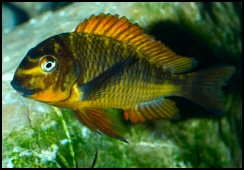
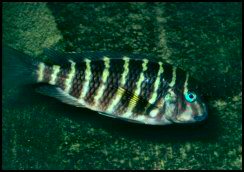
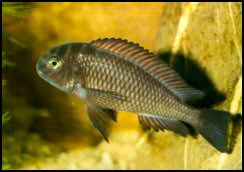
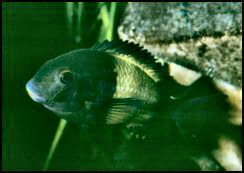
   | ||
back
to the starting page | ||
| | ||
 |
|
|
|
|
|
|
|
C.
Tropheus brichardi
(Nelissen & Thys van den Audenaerde,1975)
is the third species of tropheus. The description was made on the basis of 10 conserved specimen, obtained from the discoverer, Pierre Brichard. To him the animals owe there name. The type-specimen originated from Nyanza in Burundi at the eastern coast of the lake. The differences between the specimen are marginal: a mouth a little bid broad, fins a little bit shorter and the room between the eyes. The aquarist will not be abel to come to a determination. Together with the pattern of colors perhaps it will work out better. Mature animals have ca 13 cm in length. Tropheus brichardi also lives in large groups. Before the official ascription the aquarists knew them already for a great length of time "Choco Moorii". The first specimen had a brown color and a dark, nearly black tailfin. On the back there was a yellowish saddle and on the apposite of that was a smaller stain in the same color The pale lips are set off with a dark edging. The outside edge of the soft skin in the anale is shining orange, and at the back edge there are from 5 tot 8 yellow or orange spots. The eye is white excepting the black pupil. The upper part of the eye sometimes cab be a little yellowish. Several color variations may exist here too. So there animals with a kind of yellow-brown striping The saddlespot may have sharp boundaries but the lines also can be vague or the spot is totally absent. Especially with the females one almost never finds a suggestion of this saddlespot. Tropheus brichardi perhaps is the most aggressive specimen. A tank of sufficient dimensions is prerequisite for this kind. Of course the behavior of Tropheus brichardi globally seen is equal to that of the other the tropheusspecimen That means that they like a overgrowth on the stones and the ritual of reproduction does not differ very much. Due to the grazing, at which the mouth is pressed with strength against the ground the specimen has a kind of dark circle around the very light or white beck. |
D. Tropheus
moorii kasabae.( Nelissen 1977 ) |